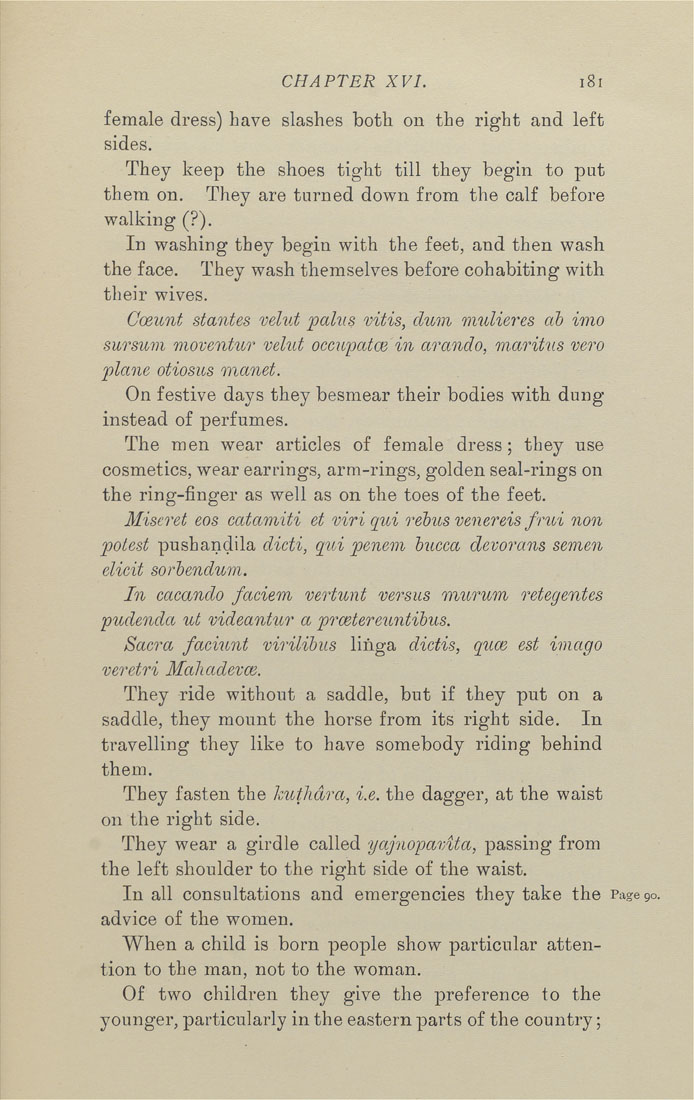Bīrūnī, Muḥammad ibn Aḥmad, Alberuni's India (v. 1)
(London : Kegan Paul, Trench, Trübner & Co., 1910.)
|
||
|
|
|
|
| Page 181 |

CHAPTER XVI. Female dress) have slashes both on the right and left sides. They keep the shoes tight till they begin to put them on. They are turned down from the calf before walking (?). In washing they begin with the feet, and then wash the face. They wash themselves before cohabiting with their wives. Coeunt stantes velut palus vitis, dum mulieres ah imo sursum moventur velut occupatce in arando, m.aritus vero plane otiosus manet. On festive days they besmear their bodies with dung- instead of perfumes. The men wear articles of female dress; they use cosmetics, wear earrings, arm-rings, golden seal-rings on the ring-finger as well as on the toes of the feet. Miseret eos catamiti et viri qui rehus venereis frui non potest pushandila dicti, qui penem hucca devorans semen elicit sorhendum. Ln cacando faciem vertunt versus murum retegentes pudenda ut videantur a prcetereu7itibus. Sacra faciunt virilibus linga dictis, quce est imago veretri Mahadevce. They ride without a saddle, but if they put on a saddle, they mount the horse from its right side. In travelling they like to have somebody riding behind them. They fasten the kuthdra, i.e. the dagger, at the waist on the right side. They wear a girdle called yajnopavita, passing from the left shoulder to the right side of the waist. In all consultations and emergencies they take the Page 90. advice of the women. When a child is born people show particular atten¬ tion to the man, not to the woman. Of two children they give the preference to the younger, particularly in the eastern parts of the country; |
| Page 181 |







